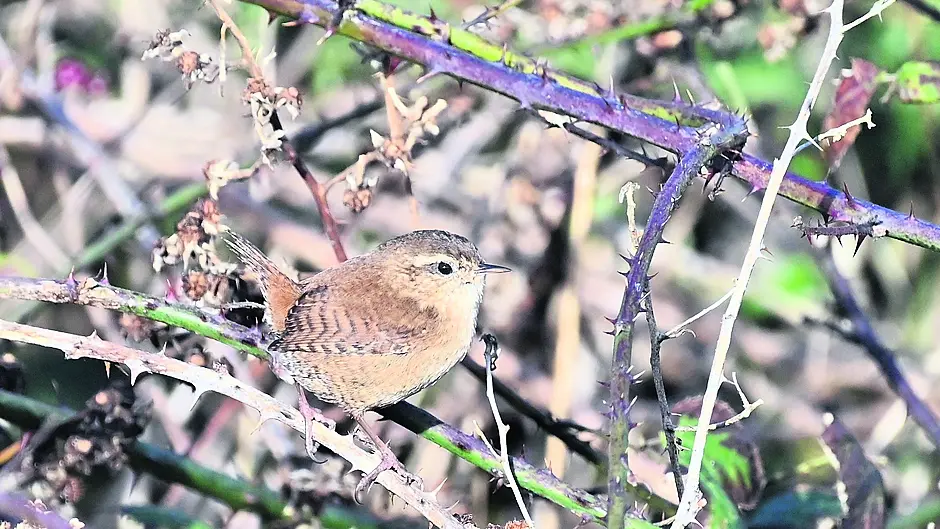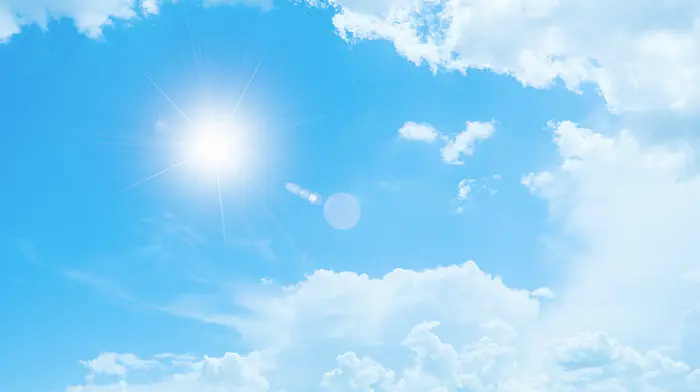WILDLIFE often features heavily on Christmas cards, adverts and related imagery. Across the globe, nature symbolic of the season seems to include animals such as polar bears and reindeer. This makes me wonder what we can see and celebrate locally as quintessential Christmas nature over this year’s festive period.
Robin red-breast
The first species that instantly springs to mind is our native robin. Present all over the country in urban and rural areas alike, this cheeky and territorial bird rarely fails to make their presence known. Unlike many bird species, males and females look alike, both sporting the typical deep red-orange breast. At this time of year, they may be seen busily foraging for food, making the most of the shortened daylight hours.
The wren, Ireland’s second smallest resident bird (the tiny goldcrest is the smallest), is another familiar festive bird. Happily, while the celebration of the wren continues on St Stephen’s day, they are no longer hunted, killed and carried aloft by the ‘Wren Boys’ for the door-to-door collection of money.
As for ‘two turtle doves and a partridge in a pear tree’, unfortunately it is unlikely you will spot either bird in the wild in West Cork in December. The grey partridge is resident in Ireland but is more commonly found North of here in cereal growing areas and is subject to ongoing conservation measures due to dwindling numbers. Turtle doves on the other hand, may be seen in West Cork, particularly on Cape Clear. They land there on their migration from Sub-Saharan Africa but this is usually only in the Spring and Autumn.
Both the grey partridge and the turtle dove are red-listed by BirdWatch Ireland, with the turtle dove being of international conservation concern, listed as vulnerable by the IUCN. Collared doves, however, are a common sight in our gardens all year round. These doves arrived in Ireland in 1959 and have quickly established, becoming widespread. They are grain and seed lovers, so you can try tempting them to your garden with millet, sunflower, wheat or corn if you would enjoy these semi-festive visitors.
‘Reindeer food’ caution
If, like me, you have family members that want to leave food out for Santa’s reindeer, it is important to avoid buying or making up your own “reindeer food” that contains glitter or sequins. These are harmful to wildlife and the environment. A mix of items like sunflower hearts, uncooked rolled oats, dried mealworms or waxworms, bird peanuts, sunflower seeds or grated cheese will still help speed Santa’s reindeer on their way but will also give wild birds an enjoyable Christmas meal.
Festive foliage
It is wonderful that we have holly and ivy aplenty in West Cork because these bring welcome colour and greenery to the wintry countryside when all the deciduous trees have lost their leaves. While these plants are synonymous with the festive season, they should really be celebrated all year round as they provide excellent support for wildlife. Despite being toxic for humans and other mammals, holly and ivy berries provide food for birds such as blackbirds, mistle- and song-thrushes and robins over the colder months. Migratory birds such as redwings and fieldfares that arrive here for the winter also gain energy from these nutrient dense berries. In Springtime, holly and ivy provide excellent cover for nesting birds but it is not just birds that benefit, they also provide year-round shelter for insects and small mammals. Amazingly the holly blue butterfly uses both plants to complete its life-cycle. In Spring, this small butterfly lays its first generation of eggs on the flowers of holly and lays the second generation on ivy later in the Summer. Both plants are critically important for feeding the caterpillars of the holly blue.
A little quirk of nature is that the upper leaves of holly trees are not as prickly as the lower ones. The sharp prickles on the lower boughs are an adaptation to deter grazing animals such as sheep, goats, cattle and horses. Have a look next time! Additionally, if the holly you are looking at has red berries, you know it is a female tree. Holly is dioecious meaning that each individual plant is either male or female and only females bear the characteristic red berries.
Ivy flowers appear later than others and in Autumn they provide a rich source of late nectar for insects like hoverflies and bees when other supplies are scarce. In 2021 a species of solitary bee, the ivy bee, was detected in Ireland for the first time. This bee feeds on ivy flowers from September to November, so while we will not see the bee itself at Christmas, we can thank our festive ivy for supporting it.
As for kissing under the mistletoe, I am sorry to say it is unlikely you will find any growing in West Cork. It is a hemiparasitic plant, meaning it grows and feeds on another plant, but it can also photosynthesise to get its own energy. Where it is present, it forms dense spheres of stems, branches, leaves and berries in its host trees. Favouring apple, hawthorn, lime, poplar and willow trees, it does grow in Ireland but only in limited areas.
Marine creatures are not typically associated with the festive season, however as we are a coastal community I can’t resist trying to fit some in. It is possible to see fin and humpback whales along our coastline in December and into early January. So, if you are looking for an activity to burn off your Christmas dinner, if the weather’s favourable why not head to an elevated spot along the coast to see if you can spot these magnificent creatures. In keeping with the theme, several species of (Christmas) starfish can occasionally be found in rock-pools at low tide, so if you have had a new pair of wellingtons for Christmas why not try them out with some rock-pooling. Have a lovely festive season and make sure to enjoy some of the best gifts of all from our local nature.
• Ann Haigh MVB MSc MRCVS is a Skibbereen resident, a mum-of-two and a veterinarian with a masters in wildlife health and conservation and she is passionate about biodiversity and nature.








